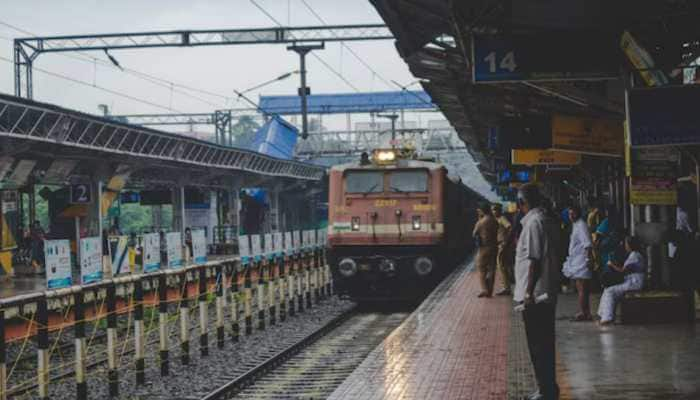Cafral study claims positive market response to NPA Ordinance
Since the Ordinance and naming of 12 largest defaulters, the banking index gained over 5 per cent, says the report based on the stock performance between May 4 and June 13.
Trending Photos
)
Mumbai: A research by RBI economists claims the equity market has reacted positively to the Ordinance that empowered the Reserve Bank to take stern action against large defaulters.
Since the Ordinance and naming of 12 largest defaulters, the banking index gained over 5 per cent, says the report based on the stock performance between May 4 and June 13.
"The May 4, 2017 Ordinance amending the Banking Regulation Act has been positive for banks and their high quality borrowers but negative for the distressed firms, suggestive of its potential to rejuvenate banking sector health and to improve capital allocation across firms," claims a research paper by Cafral.
Cafral, or the Centre for Advanced Financial Research and Learning, is one of the research wings of RBI.
The note, titled 'Mint Street Memo No 03', is based primarily on the performance of bank stocks as also of the affected 12 largest borrowers who together account for a quarter of the total bad loans in the system that stood at over Rs 8 trillion, or 9.6 per cent of the total system.
The Banking Regulation (Amendment) Ordinance promulgated on May 4 empowered the RBI to direct banks to initiate insolvency proceedings in respect of default under the provisions of the Insolvency and Bankruptcy Code, 2016 (IBC).
It also enabled the RBI to constitute committee/s to advise lenders on resolution of stressed assets.
The RBI on May 22 released a detailed action plan to implement the Ordinance. One of the aspects of the plan was the setting up on an Internal Advisory Committee (IAC), which held its first meeting on June 12 and recommended that all 500 accounts with an outstanding amount of over Rs 5,000 crore each, and 60 per cent of them being NPAs (as of March 2016) would qualify for reference under IBC.
Using these criteria, 12 of 500 such accounts were named by the RBI, which asked banks to start IBC proceedings against them.
These 12 accounts - Bhushan Steel, Bhushan Power & Steel, Essar Steel, Amtek Auto, Lanco Infra, Monet Ispat, Electrosteel Steel, Era Infra, ABG Shipyard, Alok Industries, Jaypee Infratech and Jyoti Structures - are under bankruptcy proceedings now.
The paper claims that between the event date on May 5 (the Ordinance was issued after market hours on May 4) and the event window - that is nine trading days before the event date and nine trading days post-event date - the banking index made one of its biggest gains.
The response of the market is analysed by computing abnormal returns. An abnormal return is defined as the difference between realised returns and expected returns regressed over the estimation window starting 250 days prior to the event window and ending 30 days before the event date.
The analysis focuses on the 36 banks for which stock market data is available. Those banks that have a NPA ratios above the sample median value for all banks in FY16 are classified as stressed banks. The remaining are classified as non-stressed banks. The firm sample is divided into three sets on the basis of interest coverage ratio in FY16.
The second event study uses June 12 (IAC's first meeting) as the second event date. It examines stock price reactions of the 12 defaulters that were referred to NCLT, and the lead banks of these firms.
For bank analysis, the 36 banks in the sample are divided into those that are the lead banks of any of these 12 defaulter firms and the remaining lenders.
"Cumulative abnormal returns of stressed banks increased sharply following these events. In contrast, non- stressed banks witnessed a more modest increase in abnormal returns. Strikingly, abnormal returns between stressed and non-stressed banks widened to almost 5 per cent during the period under analysis," says report.
The report further claims "overall these results indicate that the promulgation of the Ordinance has been perceived by the market as positive for the stressed banks, but negative for low and intermediate quality firms."
In contrast, high quality firms linked to stressed banks performed better than high quality firms linked to non- stressed banks, immediately following the event date.
"This means that the market lost confidence in low quality firms linked to stressed banks but high quality firms linked to stressed banks are seen in a positive light.
"One possible explanation for this is that high quality firms linked to stressed banks benefit from a balance sheet clean-up of stressed banks," surmises the report.
Similarly, after June 13, when RBI named 12 largest defaulters, the counters of those firms declined steeply in abnormal returns compared to the other firms belonging to the same industry as the defaulter firm.
The RBI action was a clear indication of "the poor financial health" of these defaulters and it is evident that market lost confidence in them during the span of the event window", the report adds.
Stay informed on all the latest news, real-time breaking news updates, and follow all the important headlines in india news and world News on Zee News.
Live Tv







)
)
)
)
)
)
)
)
)
)
